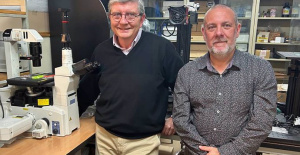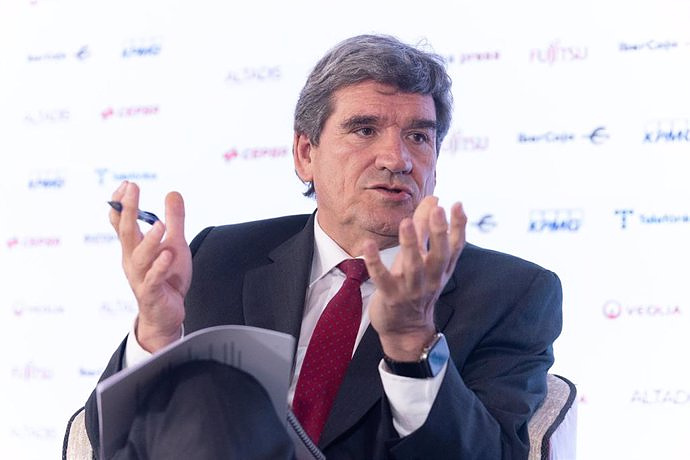It makes the trial court ugly that it did not analyze, taking into account the testimony of the victim, why it took me 10 years to denounce
MADRID, 31 Dic. (EUROPA PRESS) -
The Supreme Court has agreed to acquit a man who was sentenced by the Madrid Superior Court of Justice (TSJM) in 2020 to three years in prison for a crime of sexual abuse of a minor. The High Court asserts that his right to the presumption of innocence was not respected and that the evidence analyzed does not clear up any reasonable doubt.
This is a man who was found guilty after pleading proven that in 2007 he would have taken advantage of a moment when he was alone with the seven-year-old minor, while the rest of the residents of the house were sleeping, to pick her up, sit her on his knees and kiss him on the mouth.
The defense appealed to the Supreme Court (TS) alleging that his right to the presumption of innocence had been violated because he understood that from the evidence carried out "in no way" it could be considered accredited beyond any reasonable doubt that he performed on the minor "the act sexually abusive."
Thus, it pointed out that there were "serious inconsistencies" in the victim's testimony and that the court decision disregarded the statements of up to four witnesses who could prove that he was not alone with the minor "in a small house inhabited by fifteen people." .
Now, the Supreme Court, in a sentence collected by Europa Press, after analyzing the case indicates that, given the probative information, it does not identify in the factual conclusion reached by the trial court "the degree of qualified conclusiveness that converts the defensive hypothesis of not participation in phenomenologically irrelevant", something that "opens the way to reasonable doubt".
In line, remember that when the evidence to convict someone depends essentially on the testimony of the person who claims to have been a victim, "the information provided by this must be subjected to a demanding test that allows its reconstructive quality to be measured."
It also highlights that although the victim may have access to the greatest amount of information about the event, "this prima facie advantageous cognitive position does not even mean that the information can or should be sufficient in any case to reconstruct the accused act and the participation in it." of the accused person nor, either, that can or should be credible or reliable in any case".
In this sense, the Supreme Court ruling underlines that this case "raises significantly complex evidentiary issues" because the information "is transmitted, for the first time, ten years after the alleged commission of the justiciable act" and because the minor was seven years old and her brother nine.
"These two factors -the very late moment of the disclosure and the young age of the alleged victim when the alleged event occurred-, by themselves, required a particular effort to analyze all the probative information available to him. the court", indicates the Chamber.
He adds that "memory does not function as a sort of static file of detailed information about what happened" and that "information is not stored as it is perceived, as if it were a recording of what happened." "The memory is nourished by interpretations of what happened. It is always the subject of a process of selection of relevant information after an interpretation that gives it meaning and its integration into previously existing structures," the resolution clarifies.
It says more, and it is that memory is "a process of reconstruction and not of simple recovery" so that over time it introduces "significant risks of false memories".
For this reason, the Chamber points out that in cases of sexual abuse of minors, particularly when a significant period of time has elapsed between the commission and the disclosure, "a holistic methodology must be used that addresses all the concurrent variables in the situation of affirmed victimization as the frequency, intensity, duration, spatial and temporal circumstances of production.
Both the relationship with the aggressor and gender, the psychoevolutionary development phase in which the victim is, the socio-cultural context, the level of vulnerability and the capacity for resilience must also be taken into account.
It asserts that in the specific case, the first instance judgment dispenses with the analysis of factors "as significant as those related to the context of disclosure; the causes that may explain the delay of more than ten years; if what was narrated could respond to a recovered memory or repressed; or if the passage of time (...) has been able to alter the meaning attributed to the memory".
It indicates that it was also dispensed with analyzing whether the precision levels are consistent with the memory trace that the event, such as the one declared proven, can leave in young children. And he refers not only to the victim but also to the memory of his brother, who, in his first summary statement, ten years after the fact, stated that he remembered very little of what he had seen.
After basing the decision in this way, the Supreme Court indicates that it does not intend to affirm that the information transmitted by the minor responds "to a mendacious cause or that can be classified as false", but rather that her testimony "has not reached levels of external corroboration and consistency sufficient internal evidence to declare the facts of the accusation proven beyond any reasonable doubt".

 Exploring Cardano: Inner Workings and Advantages of this Cryptocurrency
Exploring Cardano: Inner Workings and Advantages of this Cryptocurrency Seville.- Economy.- Innova.- STSA inaugurates its new painting and sealing hangar in San Pablo, for 18 million
Seville.- Economy.- Innova.- STSA inaugurates its new painting and sealing hangar in San Pablo, for 18 million Innova.- More than 300 volunteers join the Andalucía Compromiso Digital network in one month to facilitate access to ICT
Innova.- More than 300 volunteers join the Andalucía Compromiso Digital network in one month to facilitate access to ICT Innova.-AMP.- Ayesa acquires 51% of Sadiel, which will create new technological engineering products and expand markets
Innova.-AMP.- Ayesa acquires 51% of Sadiel, which will create new technological engineering products and expand markets The May 1 demonstration for full employment begins in Madrid
The May 1 demonstration for full employment begins in Madrid RELEASE: Tata Communications continues to be recognized for the eleventh consecutive year in the Gartner Magic Quadrant
RELEASE: Tata Communications continues to be recognized for the eleventh consecutive year in the Gartner Magic Quadrant STATEMENT: MolecuLight present at the Annual Conference of the European Wound Management Association (EWMA) 2024 (1)
STATEMENT: MolecuLight present at the Annual Conference of the European Wound Management Association (EWMA) 2024 (1) STATEMENT: MolecuLight present at the Annual Conference of the European Wound Management Association (EWMA) 2024 (2)
STATEMENT: MolecuLight present at the Annual Conference of the European Wound Management Association (EWMA) 2024 (2) How Blockchain in being used to shape the future
How Blockchain in being used to shape the future Not just BTC and ETH: Here Are Some More Interesting Coins Worth Focusing on
Not just BTC and ETH: Here Are Some More Interesting Coins Worth Focusing on Valencia unanimously approves the ordinance to allocate spaces to test innovative initiatives
Valencia unanimously approves the ordinance to allocate spaces to test innovative initiatives UPV researchers promote a paid master's degree as a "talent factory" in integrated photonics
UPV researchers promote a paid master's degree as a "talent factory" in integrated photonics A spin-off of the UV works on obtaining high-resolution 3D biomedical images in real time
A spin-off of the UV works on obtaining high-resolution 3D biomedical images in real time They create a bank of machinery sounds to prevent breakdowns through artificial intelligence
They create a bank of machinery sounds to prevent breakdowns through artificial intelligence A million people demonstrate in France against Macron's pension reform
A million people demonstrate in France against Macron's pension reform Russia launches several missiles against "critical infrastructure" in the city of Zaporizhia
Russia launches several missiles against "critical infrastructure" in the city of Zaporizhia A "procession" remembers the dead of the Calabria shipwreck as bodies continue to wash up on the shore
A "procession" remembers the dead of the Calabria shipwreck as bodies continue to wash up on the shore Prison sentences handed down for three prominent Hong Kong pro-democracy activists
Prison sentences handed down for three prominent Hong Kong pro-democracy activists ETH continues to leave trading platforms, Ethereum balance on exchanges lowest in 3 years
ETH continues to leave trading platforms, Ethereum balance on exchanges lowest in 3 years Investors invest $450 million in Consensys, Ethereum incubator now valued at $7 billion
Investors invest $450 million in Consensys, Ethereum incubator now valued at $7 billion Alchemy Integrates Ethereum L2 Product Starknet to Enhance Web3 Scalability at a Price 100x Lower Than L1 Fees
Alchemy Integrates Ethereum L2 Product Starknet to Enhance Web3 Scalability at a Price 100x Lower Than L1 Fees Mining Report: Bitcoin's Electricity Consumption Declines by 25% in Q1 2022
Mining Report: Bitcoin's Electricity Consumption Declines by 25% in Q1 2022 Oil-to-Bitcoin Mining Firm Crusoe Energy Systems Raised $505 Million
Oil-to-Bitcoin Mining Firm Crusoe Energy Systems Raised $505 Million Microbt reveals the latest Bitcoin mining rigs -- Machines produce up to 126 TH/s with custom 5nm chip design
Microbt reveals the latest Bitcoin mining rigs -- Machines produce up to 126 TH/s with custom 5nm chip design Bitcoin's Mining Difficulty Hits a Lifetime High, With More Than 90% of BTC Supply Issued
Bitcoin's Mining Difficulty Hits a Lifetime High, With More Than 90% of BTC Supply Issued The Biggest Movers are Near, EOS, and RUNE during Friday's Selloff
The Biggest Movers are Near, EOS, and RUNE during Friday's Selloff Global Markets Spooked by a Hawkish Fed and Covid, Stocks and Crypto Gain After Musk Buys Twitter
Global Markets Spooked by a Hawkish Fed and Covid, Stocks and Crypto Gain After Musk Buys Twitter Bitso to offset carbon emissions from the Trading Platform's ERC20, ETH, and BTC Transactions
Bitso to offset carbon emissions from the Trading Platform's ERC20, ETH, and BTC Transactions Draftkings Announces 2022 College Hoops NFT Selection for March Madness
Draftkings Announces 2022 College Hoops NFT Selection for March Madness























